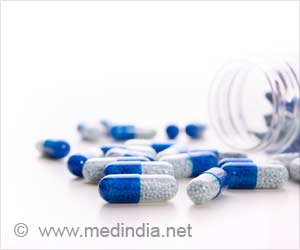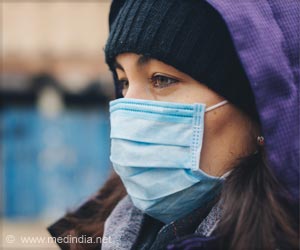COVID-19: The biggest challenge with the pandemic lies in not only developing a successful vaccine but also producing it in quantities necessary to provide immunity to all citizens. Competition is already emerging over who will have access once a vaccine is ready.
Highlights :
- The COVID-19 pandemic is not likely to end until an effective vaccine is developed
- More than one hundred vaccines for COVID-19 are in pre-clinical development
- About 17 vaccine candidates across 10 countries are undergoing clinical trials
- Another challenge lies in producing enough vaccine for the world’s population
Developing a vaccine in quantities that is necessary to provide immunity to all the citizens is imperative. When most of the population becomes immune to a particular infection, even those who are not immune are considered to be protected. This is herd immunity and it reduces the likelihood of an outbreak. Diseases such as chickenpox, measles, mumps, and polio are examples for which population has achieved herd immunity due to vaccines.
Clinical vaccine trials are underway in many countries, and competition is emerging over who will have the first access to it.
Read More..
Other Treatments for COVID-19
Various treatment modalities to reduce the severity and duration of the illness are being explored in the interim. The most promising treatment among them is the antiviral drug, remdesivir, developed by the U.S-based Gilead Sciences. Drug trials from this medication had shown faster recovery rates from the virus across Asia, U.S and Europe.A steroid, dexamethasone, helps to reduce the risk of mortality in case of severe infection. Anti-malarial drug hydroxychloroquine shows promising results in COVID-19 treatment. It is also taken as a preventive medication though scientists warn about its harmful side-effects.
How does a Vaccine Work
Vaccines are biological preparations from dead or weakened viruses known as antigens. These antigens trigger the body’s immune system to produce antibodies that can bind to viral surfaces and neutralize it.Four Main Types of Vaccines Used
- Live Vaccines - That uses weakened viruses to trigger antibody production
- Inactivated Vaccines - That uses dead viruses to produce vaccine
- Toxoid Vaccines- That uses toxins produced by the virus to trigger immunity against the part of the virus that causes the disease
- Others- These include sub-unit, recombinant, polysaccharide and conjugate vaccines. These use proteins or other pieces of the virus to prompt antibody production.
Status of COVID-19 Vaccine
More than 100 vaccines developed so far by pharmaceutical companies, academic institutions and government agencies are in pre-clinical trials, and at least seventeen of the vaccine candidates are undergoing clinical trials in ten countries including the U.S, UK, and China. While several of these candidates are spurring hope, the success of these vaccines on a large scale is yet to be determined. Clinical trials for other vaccine candidates are taking place in Russia and South Korea.Team Effort
Vaccines are often a result of collaborative efforts from both private pharmaceutical firms and public health sectors of the society. Some of the major players in the COVID-19 vaccine production are the Government, International Institutions, private sector, research institutions and non-profit organizations.- The Government agencies play a crucial role in vaccine research and development by supplying funds in the form of grants. For instance, the U.S. Biomedical Advanced Research and Development Authority (BARDA), an agency of the U.S. Department of Health and Human Services (HHS) has pledged millions of dollars to Johnson & Johnson and Moderna, to assist them in the development of vaccines.
- International institutions such as the World Health Organization, and the World Bank are focused on a fair allocation of finances among all the countries. Apart from manufacturing an effective COVID-19 vaccine, it focuses on improving access to lower-income countries.
- Early on during the research, funding comes from the public sector in the form of grants, but the bulk of financing for clinical development comes from the private sector. The private sector comprises of biotech start-ups to giants such as Johnson & Johnson, Pfizer, and Sinopharm. These companies have shifted their research and development (R&D) efforts to focus on COVID-19.
- The research institutions and non-profits organizations such as colleges or universities, participate in pre-clinical research or clinical trials.
Vaccine Production Process
The stages of vaccine development include academic research that takes anywhere between 2-4 years, pre-clinical approval, and clinical trials that can take up to 5 years. After this comes the approval, manufacturing, production, and distribution.Among these stages, the clinical trials are crucial indicators of the effectiveness of the vaccine. The potential vaccine undergoes an animal trial initially. The human trial is conducted in three phases, with each phase having more number of volunteers. If a vaccine is ineffective, causes harmful side-effects or is similar to the existing vaccine, it will not proceed.
If a vaccine trial becomes successful, then the developers seek approval of international regulatory bodies like the U.S. Food and Drug Administration (FDA) or the European Medicines Agency. Only a very few drugs make it past this stage.
Finally, the vaccine has to be approved by national regulatory bodies in every country for distribution. After approval, the vaccines can be manufactured. However, COVID-19 vaccines will need to be manufactured in billions, and hence there will be a need for more production plants to meet the global demand.
Researchers are seeking to accelerate the production of the COVID-19 vaccine, though U.S officials state a timeline of 12 to 18 months. Clinical trials cannot be rushed through, as antibodies develop slowly on the body. Challenge trials, where people are deliberately exposed to disease, is a way of speeding up the trial process. But challenge trials are mostly done with curable diseases like typhoid. Another method is by focusing on new vaccine approaches using RNA and DNA. These vaccines are developed faster than conventional vaccines. Seven of the COVID-19 vaccine candidates in clinical trials are RNA and DNA-based.
Conclusion
An effective vaccine will most likely end the pandemic. There remains a tremendous challenge of producing enough for the world’s population, even after vaccine approval. Some countries like India, China, and Brazil have large vaccine industries but also have some of the largest populations, which will force them to reserve the vaccines for their citizens before global distribution.Experts warn that bidding wars over a vaccine will cause unequal distribution and increase the risk of new outbreaks.
Coronavirus seems to be mutating faster and behaving differently. So, the question about the effectiveness of the vaccine still remains unanswered. A successful vaccine can only be manufactured after uncovering such details.
Reference:
- What Is the World Doing to Create a COVID-19 Vaccine? - (https://www.newswise.com/coronavirus/what-is-the-world-doing-to-create-a-covid-19-vaccine/?article_id=734229)
Source-Medindia
















